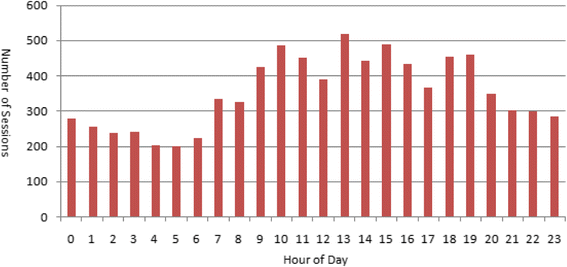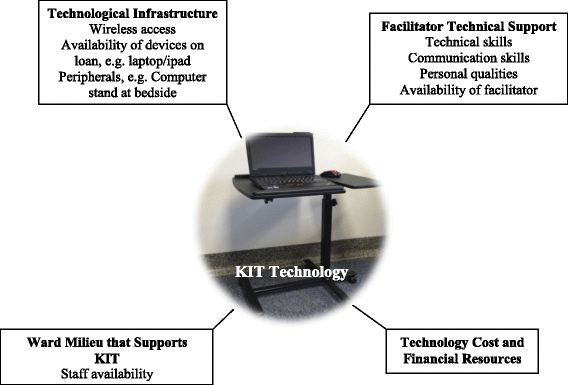Keep in Touch (KIT): feasibility of using internet-based communication and information technology in palliative care
- PMID: 28477630
- PMCID: PMC5420402
- DOI: 10.1186/s12904-017-0203-2
Keep in Touch (KIT): feasibility of using internet-based communication and information technology in palliative care
Abstract
Background: Confinement to an in-patient hospital ward impairs patients' sense of social support and connectedness. Providing the means, through communication technology, for patients to maintain contact with friends and family can potentially improve well-being at the end of life by minimizing social isolation and facilitating social connection. This study aimed to explore the feasibility of introducing internet-based communication and information technologies for in-patients and their families and to describe their experience in using this technology.
Methods: A cross-sectional survey design was used to describe patient and family member experiences in using internet-based communication technology and health care provider views of using such technology in palliative care. Participants included 13 palliative in-patients, 38 family members, and 14 health care providers. An iPad or a laptop computer with password-protected internet access was loaned to each patient and family member for about two weeks or they used their own electronic devices for the duration of the patient's stay. Quantitative and qualitative data were collected from patients, families, and health care providers to discern how patients and families used the technology, its ease of use and its impact. Descriptive statistics and paired sample t-tests were used to analyze quantitative data; qualitative data were analyzed using constant comparative techniques.
Results: Palliative patients and family members used the technology to keep in touch with family and friends, entertain themselves, look up information, or accomplish tasks. Most participants found the technology easy to use and reported that it helped them feel better overall, connected to others and calm. The availability of competent, respectful, and caring technical support personnel was highly valued by patients and families. Health care providers identified that computer technology helped patients and families keep others informed about the patient's condition, enabled sharing of important decisions and facilitated access to the outside world.
Conclusions: This study confirmed the feasibility of offering internet-based communication and information technologies on palliative care in-patient units. Patients and families need to be provided appropriate technical support to ensure that the technology is used optimally to help them accomplish their goals.
Keywords: Communication and information technology; Family members; Keep in touch; Palliative care; Palliative inpatients.
Figures
References
-
- Johnston J, Hillier LM, Purdon M, Pears D, Robson M. Opportunities for improving the quality of life of dying persons: use of technology to connect people at the end of life. J Palliat Care. 2012;28(3):178–80. - PubMed
MeSH terms
LinkOut - more resources
Full Text Sources
Other Literature Sources
Medical



